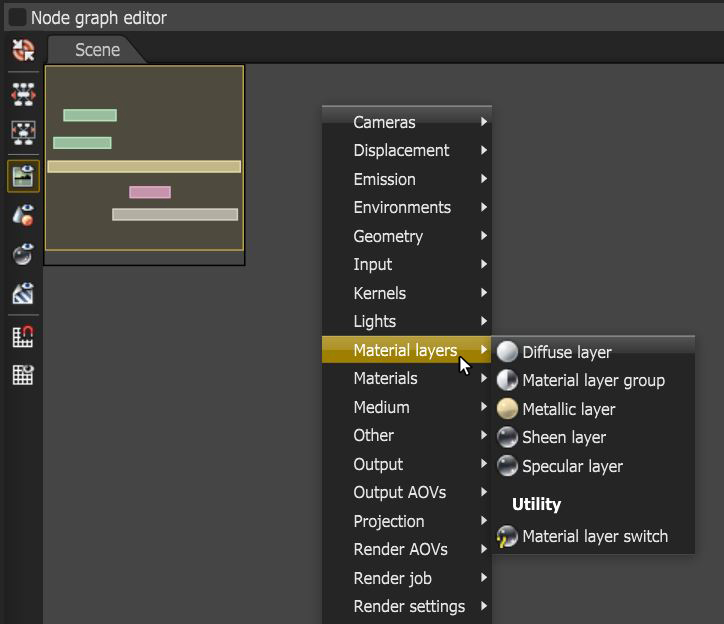Material Layers
The Layered material system lets you construct complex materials that consist of a base layer and up to eight Material Layers. The Layers are based on components used in previous Octane materials. Using this set of unique layers, OctaneRender® now lets you recreate complex materials in a physically-based manner, as opposed to manually mixing materials together.
The following Material Layer nodes are available:
- Diffuse Layer - Used for dull, non-reflective materials.
- Material Layer Group - Adds multiple Material Layers to existing materials.
- Metallic Layer - Used for highly reflective materials.
- Sheen Layer - Simulates the grazing coloration in fabrics.
- Specular Layer - Used for shiny materials like plastic, or clear materials like glass.
- Material Layer Switch - This node can be used to connect two or more material layer types to one input on a Layered Material node.
|
|
Material Layers
|
Figure 1: Accessing the Material Layers from the Node Graph Editor window.
Material Layers can connect to the Layered Material, Layer Group, or Material Layer pins on standard materials.

